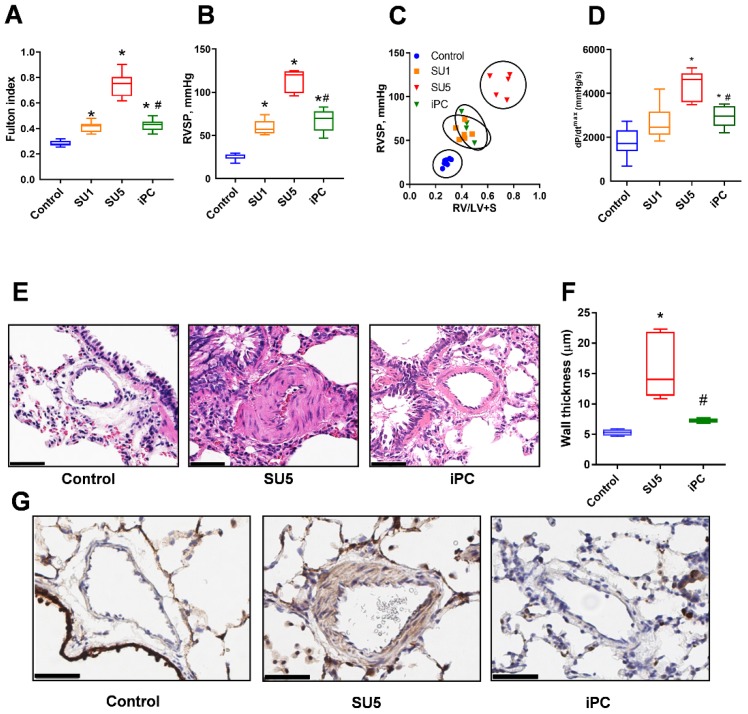Figure 1.
Pyruvate carboxylase (PC) inhibitor reduced hemodynamic and pathological changes in Sugen5416 treatment with three-week hypoxia followed by 2 week normoxia (SU5) rats and prevented pulmonary arterial hypertension (PAH) pathogenesis. (A) Right ventricular systolic pressure (RVSP) was significantly increased in SU5416 treatment with one-week hypoxia (SU1) and SU5 groups but PC inhibitor (iPC) treatment in SU5 groups controlled further increase in right ventricular (RV) pressure. (B) Fulton index, the ratio of RV to left ventricle and septum (RV/(LV+S)), was significantly increased in SU1 and SU5 groups and PC inhibitor treatment prevented its further increase from SU1 level. (C) Correlation analysis between RVSP and Fulton index showed a significant attenuation of the PAH phenotype in SU5 rats treated with the PC inhibitor. (D) SU5 groups showed increased dP/dtmax, but PC inhibitor significantly improved cardiac function and attenuated dP/dtmax. (E) hematoxylin and eosin (H&E) staining exhibited vascular fibrosis, constriction of pulmonary arteries (PA), and vascular proliferation in SU5 and these alterations were significantly attenuated with PC inhibitor treatment (scale–50 µm). (F) PA wall thickness was found to increase in the SU5 group, PC inhibitor treatment protected from the additional vascular remodeling. (G) Ki-67 immunohistochemical staining showed increased cellular proliferation in the media of the pulmonary artery in the SU5 group and PC inhibitor effectively prevented vascular remodeling and cellular proliferation (scale–50 µm). (A,B,D,F) expressed as box-and-whisker plot with median value ± min max, N = 5–6, * p < 0.05 versus control, # p < 0.05 versus SU5 by ANOVA.

